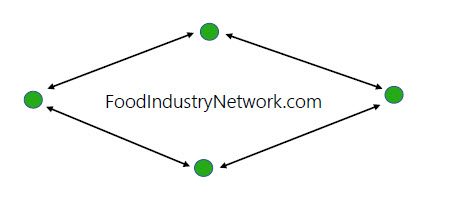Canada May Face Wave of Small Business Closures Amid Approaching ‘Silver Tsunami’ of Retiring Owners, Tariff Impacts Approach

Succession Planning Key to Preserving Canadian-Owned Businesses, Especially in Rural and Farming Communities
CALGARY, AB – April 3, 2025 – Amid economic uncertainty and tariff wars, Canada faces a wave of small business closures, partly driven by the “Silver Tsunami” of retiring Baby Boomer entrepreneurs. With small businesses making up 98.1% of all employer businesses, employing 46.5% of the private sector workforce 1, and with many owners nearing the age of retirement, succession planning is critical to the transition.
A new report from Statistics Canada reveals that the average age of Canadian business owners was 53.5 in 2020 2, with many now approaching or already at retirement age. Overall, the report found that business dynamism is on the decline in Canada, with the entry rates for incorporated business ownership decreasing and the gap between the entry and exit rates narrowing, indicating fewer new entrepreneurs entering the market to replace those who exit—creating a growing gap in local business ownership.
“Succession planning is not just about transition; it’s an opportunity to ensure independent businesses remain community-owned, strengthen local economies, safeguard jobs, and drive long-term prosperity. Whether through family succession, employee ownership, or third-party sales, a well-crafted succession strategy secures both economic resilience and Canadian sovereignty,” explains Kerry Smith, National Leader, Family Office Services at MNP LLP.
The issue is particularly pressing in the agriculture industry, where 40% of farmers are set to retire within the next decade. An estimated $53 billion worth of farmland is expected to change hands, yet 88% of farms do not have formal succession plans in place 3. Without strategic exit planning, Canada risks losing independent farms, further consolidating food production and impacting food security, particularly at a time when tariffs are set to dramatically change consumer preferences and prices.
“As independent farms change hands, the ripple effect will extend to the businesses that support them, from machinery suppliers to local retailers. Without strategic exit planning, we risk not only losing family farms but also destabilizing the broader ecosystem that sustains rural economies and food security in Canada,” says Smith. “Related industries, including specialty retail and farm equipment supply, are also deeply impacted by the upcoming wave of retirements.”
The potential impact of retiring owners and resulting small business exits is particularly pronounced in rural and small-town Canada, where 98.6% of businesses are locally owned. The majority of these businesses are in construction (14.7%) and agriculture, forestry, fishing, and hunting (14.4%), followed by retail trade (10.6%)4. A lack of succession planning is underscored by the fact that nearly two-fifths (40.5%) of small rural businesses are expecting labor-related challenges in the coming year. These include difficulties with recruitment (29.8%) and concerns about employee retention (17.0%) 5.
“Retiring boomers are at the heart of the talent shortage—especially in leadership roles—the question isn’t just about hiring, but about who will step up to keep these businesses running. Succession planning is key to ensuring a smooth transition, helping owners secure their legacy while protecting the businesses and communities that rely on them,” says Smith.
According to MNP’s Succession Readiness Report, nearly two-thirds (64.1%) of Canadian businesses have no succession plan. Fewer than one in 10 (8.5%) have established clear, actionable goals for the inevitable changeover, which threatens to leave a significant gap in Canada’s business ecosystem.
“Rallying behind local businesses goes beyond shopping locally—it’s about protecting jobs, keeping money within communities, and strengthening domestic industries. It also means ensuring Canadian businesses remain Canadian-owned. As Canada’s self-sufficiency faces pressure from global trade dynamics, maintaining community ownership of key industries is vital,” he explains.
Kerry points to underutilized programs like employee share ownership plans (ESOPs)and employee profit sharing plans (EPSPs) as one way for small businesses to keep talent and motivate the next generation of owners. ESOPs provide a structured way for business owners to pass their business on to their workforce and allow employees to build wealth through the company. EPSPs, meanwhile, offer a strategy for enhancing employee engagement and retention by sharing company profits, giving employees a direct stake in the company’s financial success and fostering a sense of shared ownership and commitment to growth.
“ESOPs and EPSPs can provide structured pathways for ownership transition while keeping businesses rooted in their communities,” Smith explains. “For Baby Boomer business owners facing retirement, these tools offer a means to ensure their companies continue thriving, while also allowing employees to build wealth and invest in the business’s success.”
Smith adds: “Employee ownership is a crucial tool not just for succession planning, but for ensuring that Canadian businesses remain Canadian-owned. Countries like the U.S. and the U.K. have long embraced ESOPs as a way to secure local economic stability, and Canada can be doing the same. ESOPs and EPSPs offer a powerful way to transition businesses while preserving Canadian jobs and keeping wealth within our communities.”
The MNP survey found that less than half (48%) of business owners are confident their business’s net value will align with their retirement goals, and many have not sought professional advice to confirm this. Smith stresses that working with advisors can be the difference between a smooth transition and financial uncertainty.
“The silver lining of the tariff war is that it encourages Canadian businesses to think ahead—identifying growth opportunities locally and exploring new markets beyond North America. Working with a qualified advisory team can help uncover opportunities that may have been overlooked,” he says. “Whether an owner plans to transfer leadership, sell to a third party, or pass the business to a family member, early strategic succession planning is crucial.”
Recent data from Statistics Canada shows that business closures remain steady, with a monthly average of 44,350 in 2024—a 2.7% increase from 2023. The closure rate in 2024 stands at 4.7%, up slightly from 4.6% in 2023 6. Although this trend is expected to accelerate as the aging population retires.
“For many aging Canadian business owners, their company is not only the cornerstone of their financial future but also a critical source of employment and stability for both their employees and the community,” says Smith.
About MNP Family Office Services
MNP’s Family Office Services team helps families and business owners navigate key decisions and milestones at every stage of their journey—from launching and growing a business to planning for succession and legacy. With a focus on aligning values, goals, and long-term vision, MNP identifies challenges and opportunities to develop customized roadmaps that maximize and organize wealth, simplify complexities, and create a clear path toward achieving both family and business objectives. From navigating complex family dynamics to exploring strategic options, MNP empowers clients to make informed decisions with confidence.
About MNP Succession Readiness Report
The MNP Succession Readiness Report offers insights from more than 550 business leaders across Canada who have completed MNP’s ExitSMART™ assessment. By combining data analysis with qualitative responses, the report examines how prepared Canadian business owners are for succession, why these trends matter, and the key factors to consider as retirement approaches. The assessment and resulting insights are designed to empower business owners to define their succession objectives, overcome challenges, and confidently plan for the future of their company.
CONTACT
Angela Joyce, Media Relations
p. 1.403.681.9286
e. angela.joyce@mnp.ca
1 Statistics Canada, Key Small Business Statistics 2024
2 Statistics Canada, Update on self-employment and business ownership in Canada, 2006 to 2020
3 RBC, April 2, 2023
4 Statistics Canada, Business Counts in Rural and Small Town Canada: Interactive Dashboard (Updated March 14, 2025)
5 Statistics Canda, The outlook of rural businesses, first quarter of 2025
6 Statistics Canada, Monthly Estimates of Business Openings and Closures, December 2024
Source: westerngrocer.com

